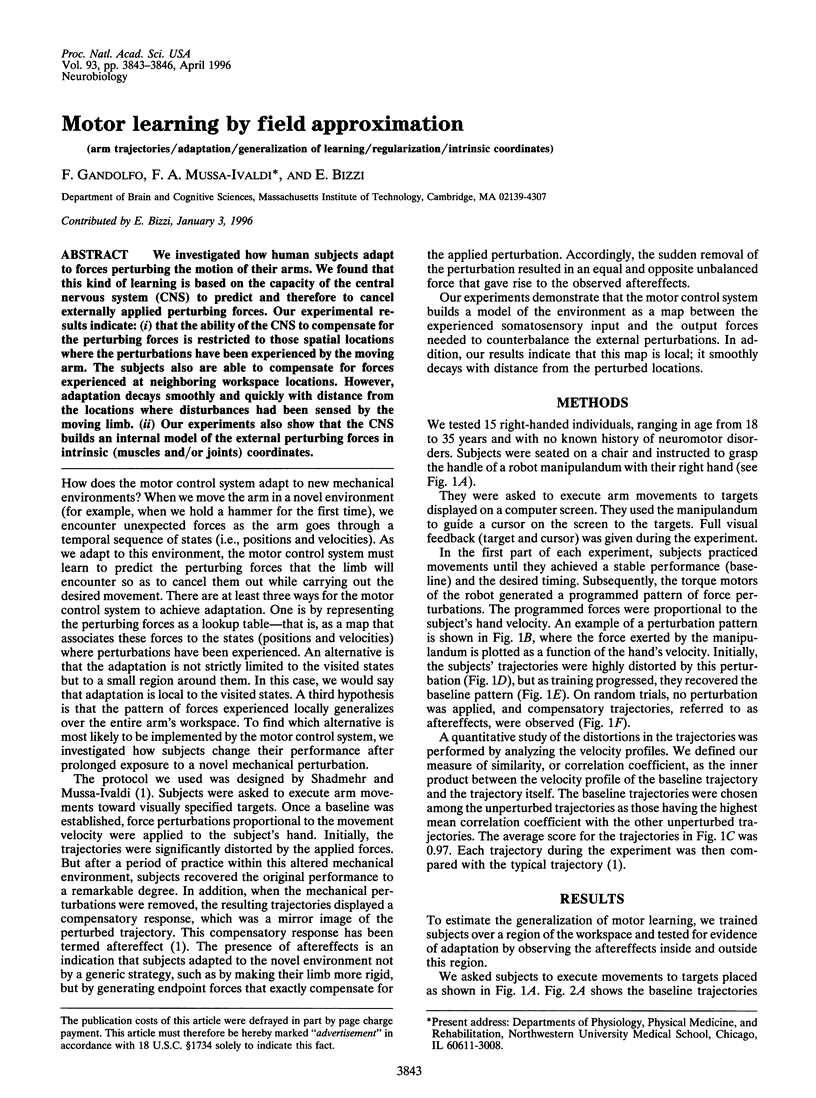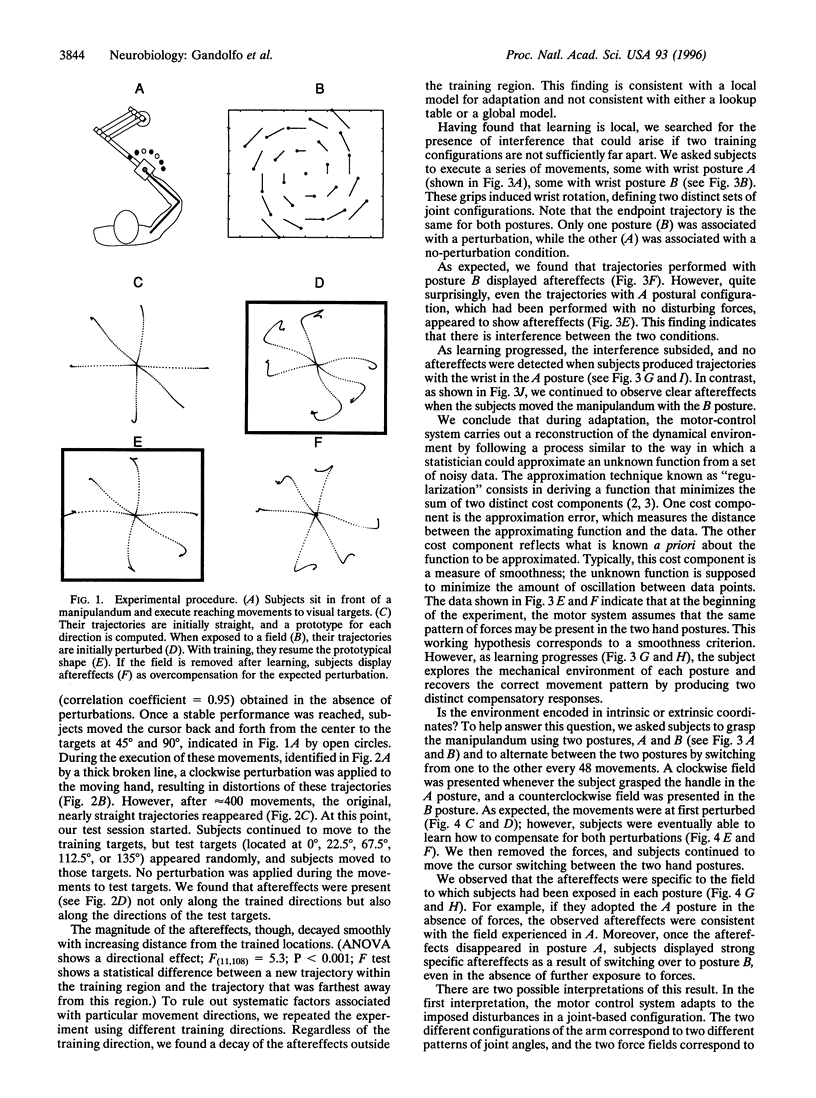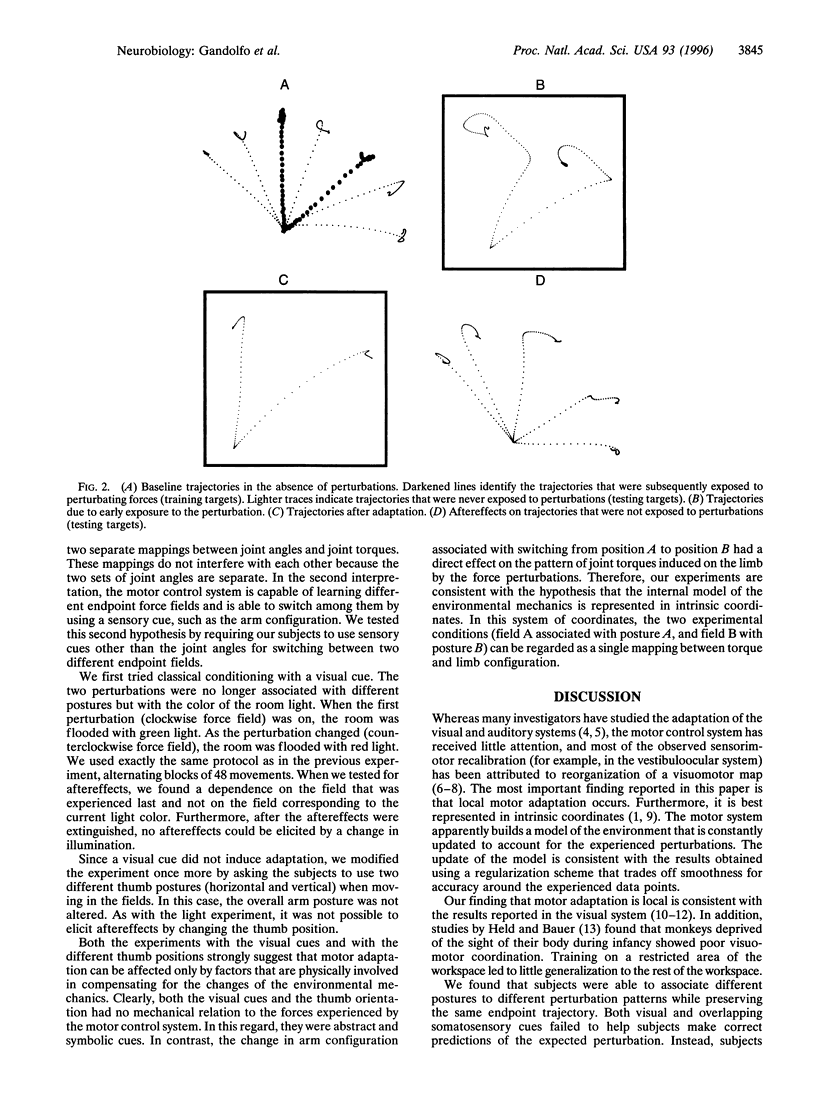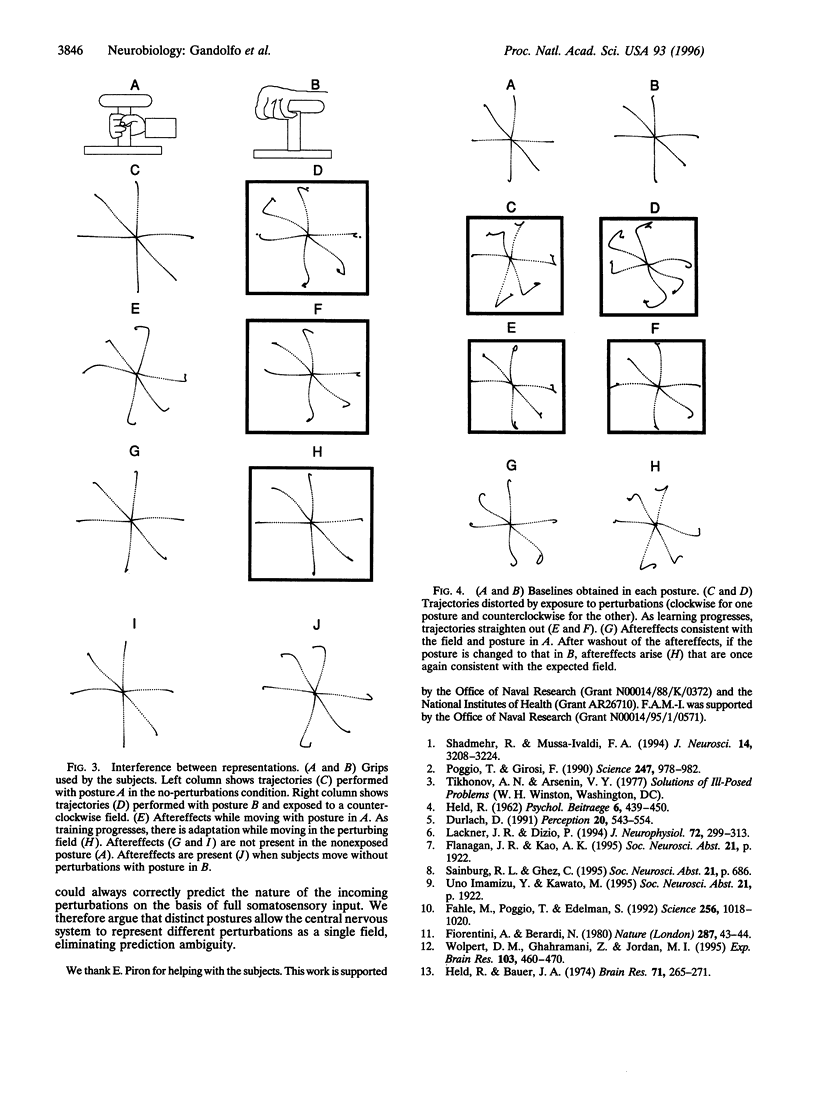Abstract
We investigated how human subjects adapt to forces perturbing the motion of their ams. We found that this kind of learning is based on the capacity of the central nervous system (CNS) to predict and therefore to cancel externally applied perturbing forces. Our experimental results indicate: (i) that the ability of the CNS to compensate for the perturbing forces is restricted to those spatial locations where the perturbations have been experienced by the moving arm. The subjects also are able to compensate for forces experienced at neighboring workspace locations. However, adaptation decays smoothly and quickly with distance from the locations where disturbances had been sensed by the moving limb. (ii) Our experiments also how that the CNS builds an internal model of the external perturbing forces in intrinsic (muscles and / or joints) coordinates.
Full text
PDF



Selected References
These references are in PubMed. This may not be the complete list of references from this article.
- Durlach N. Auditory localization in teleoperator and virtual environment systems: ideas, issues, and problems. Perception. 1991;20(4):543–554. doi: 10.1068/p200543. [DOI] [PubMed] [Google Scholar]
- Fiorentini A., Berardi N. Perceptual learning specific for orientation and spatial frequency. Nature. 1980 Sep 4;287(5777):43–44. doi: 10.1038/287043a0. [DOI] [PubMed] [Google Scholar]
- Held R., Bauer J. A., Jr Development of sensorially-guided reaching in infant monkeys. Brain Res. 1974 May 17;71(2-3):265–271. doi: 10.1016/0006-8993(74)90970-6. [DOI] [PubMed] [Google Scholar]
- Lackner J. R., Dizio P. Rapid adaptation to Coriolis force perturbations of arm trajectory. J Neurophysiol. 1994 Jul;72(1):299–313. doi: 10.1152/jn.1994.72.1.299. [DOI] [PubMed] [Google Scholar]
- Poggio T., Fahle M., Edelman S. Fast perceptual learning in visual hyperacuity. Science. 1992 May 15;256(5059):1018–1021. doi: 10.1126/science.1589770. [DOI] [PubMed] [Google Scholar]
- Poggio T., Girosi F. Regularization algorithms for learning that are equivalent to multilayer networks. Science. 1990 Feb 23;247(4945):978–982. doi: 10.1126/science.247.4945.978. [DOI] [PubMed] [Google Scholar]
- Shadmehr R., Mussa-Ivaldi F. A. Adaptive representation of dynamics during learning of a motor task. J Neurosci. 1994 May;14(5 Pt 2):3208–3224. doi: 10.1523/JNEUROSCI.14-05-03208.1994. [DOI] [PMC free article] [PubMed] [Google Scholar]
- Wolpert D. M., Ghahramani Z., Jordan M. I. Are arm trajectories planned in kinematic or dynamic coordinates? An adaptation study. Exp Brain Res. 1995;103(3):460–470. doi: 10.1007/BF00241505. [DOI] [PubMed] [Google Scholar]


